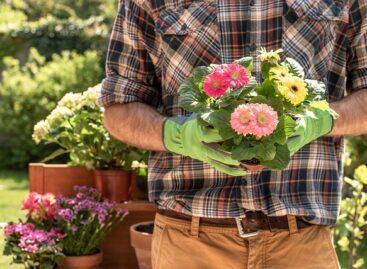Several sectors are drastically affected by climate change
Climate change has a strong impact on domestic agriculture, and the cropping structure is expected to change in the future as a result of increasingly hot and dry weather. According to Syngenta’s analysis, the area sown for corn may decrease and be partially replaced by sunflowers, and spring-sown crops such as sorghum and soybeans may also gain space. And in the cultivation of fruits and vegetables, new species that tolerate the climate better may appear. According to the company, good soil condition, water conservation, conscious tillage, and the reasonable use of input materials can help slow down this process and mitigate its effects.

This summer clearly highlighted why the changing climate is such a serious problem: July was the seventh and August the second warmest month since 1901, and there were areas of the country where not a single drop of rain fell in the last month of summer. In recent years, Hungary has been hit by severe drought several times, and this is a factor that hinders successful farming. In addition, not only the lack of precipitation, but also its distribution has changed dramatically, and this affects crop levels, according to the analysis of Syngenta, one of Hungary’s leading plant protection and seed distributors. Varieties with a shorter growing season or more drought-tolerant are gaining ground in domestic field cultivation.
According to Syngenta, conscious decision-making, planning and fine-tuning of technology can be the key to change. At the state level, this means the creation of irrigation opportunities, afforestation, and support for temporary water storage in a program spanning decades, and it is in the interest of the farmer to preserve good soil condition and water base, conscious tillage, and reasonable use of input materials.
A successful season depends on many components: the first step is choosing the right hybrid (seed). Depending on the area, it is worth choosing more drought-tolerant hybrids and varieties. An important step is the correct choice of the seeding rate and the thoughtful planning of the crop rotation. Instead of ploughing, new alternative directions offer opportunities, such as tillage without rotation, in addition, the reasonable use of input materials and the number of optimized work operations are also appreciated.
With precision farming tools, farmers can more consciously choose the seed rate, they also have the opportunity to create management zones and use a suitable sowing map to set a more conscious number of seeds. It is important to cover the rows of plants with a wide row spacing with nitrogen-collecting plants and to strengthen the plants’ stress tolerance with biological and plant physiological methods. Water retention takes on a key role and it is worth paying attention to the protection of the forest strips protecting the fields. Afforestation of soils with poor productivity and the exclusion of soil and saline spots from cultivation are also among the possibilities.
Related news
AM: ornamental plant growers can continue to count on government support
🎧 Hallgasd a cikket: Lejátszás Szünet Folytatás Leállítás Nyelv: Auto…
Read more >Ministry of Agriculture supports the food industry’s adaptation to new challenges
🎧 Hallgasd a cikket: Lejátszás Szünet Folytatás Leállítás Nyelv: Auto…
Read more >István Nagy: the total output value and profitability of agriculture have also increased
🎧 Hallgasd a cikket: Lejátszás Szünet Folytatás Leállítás Nyelv: Auto…
Read more >Related news
CDs and DVDs are experiencing a renaissance at Vatera, but second-hand LEGO is the real star of this Christmas
🎧 Hallgasd a cikket: Lejátszás Szünet Folytatás Leállítás Nyelv: Auto…
Read more >Christmas tree shopping is also going digital: demand for online ordering is growing rapidly
🎧 Hallgasd a cikket: Lejátszás Szünet Folytatás Leállítás Nyelv: Auto…
Read more >NGM and VOSZ cooperation agreement for the security of digital commerce
🎧 Hallgasd a cikket: Lejátszás Szünet Folytatás Leállítás Nyelv: Auto…
Read more >






